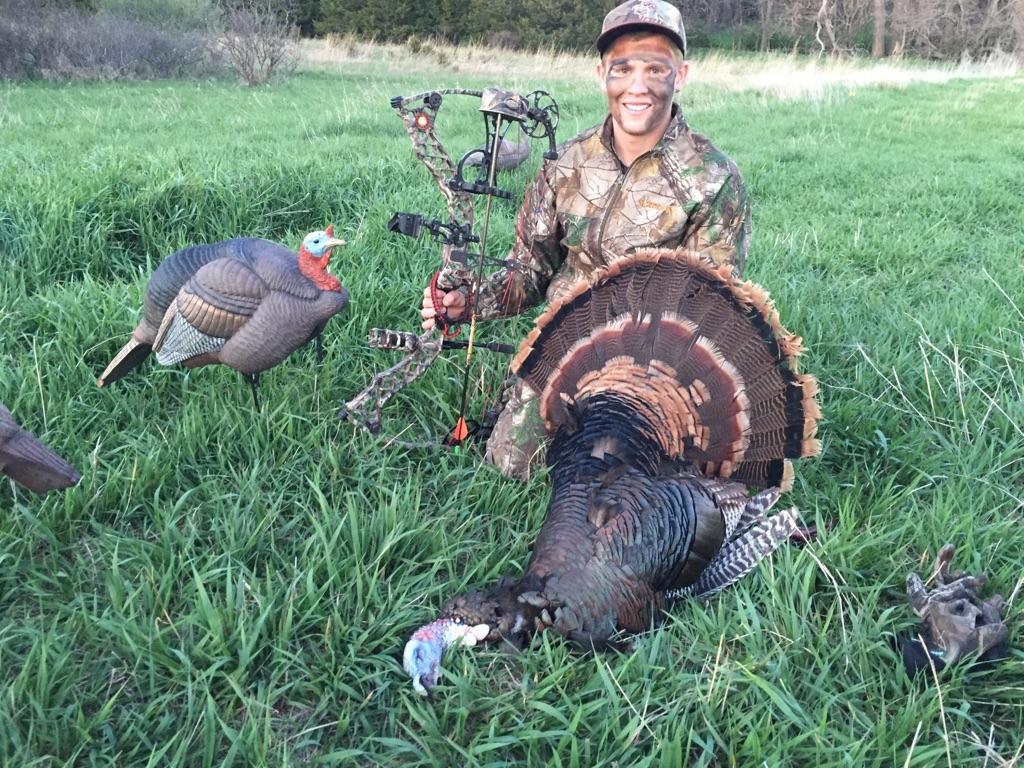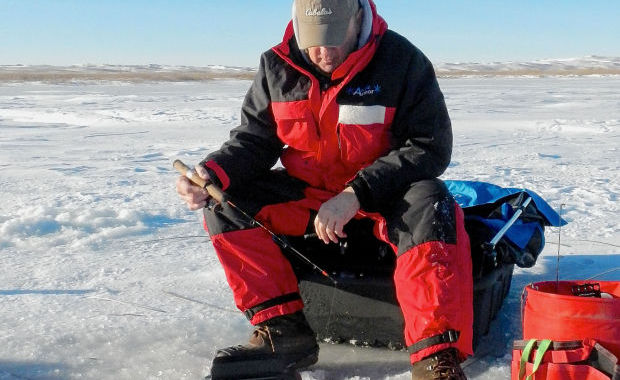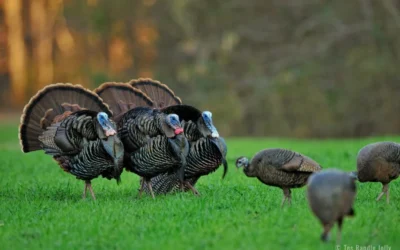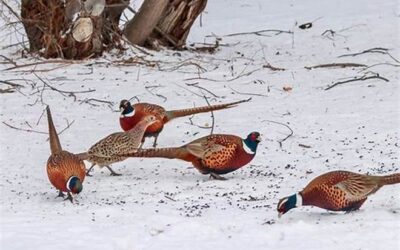It looked as if it would be a tough season for Team Outdoorsmen Adventures member Josh Anderson, Hartington, NE. and I as we tried to film Josh’s first archery turkey hunt.
Our first set up (Plan A) was in the field the birds had been using last year, but this year, they decided to do their thing in a field below.
Our second set up (Plan B) was in the bottom where the gobblers were strutting this year: where we relocated a ground blind in amongst the trees along the creek. When the sun rose, the birds pitched out into the field east of our blind, refusing to come to the west.
Then the birds changed their pattern, moving west of the blind and not coming east, so we relocated the blind to the west field (Plan B).
(Plan C) Happened a few days later, where they moved back to their old haunt, so we grabbed my blind and stuck it in the ground just west of where they were roosting, I called in a nice gobbler, but the bird spotted Josh bringing his bow up and high tailed it back to the east.
(Plan D) On our last scouting trip, the birds weren’t in the field we had hunted, so we changed tactics, moving to a new area, as we worked our way in along the edge of the tree line several Toms gobbled north of an open field. We quickly set up the blind, tucking it in amongst the plum bushes, doing our best to brush in the front of the blind, slid out of the area and came back that evening. With our decoys out in front of the blind, we patiently waited for those Toms that had gobbled at us earlier to respond to our calls. Nothing no gobbles and no sign of the birds, it looked like we would have to come up with a better plan. We tried using Plan A & B and had blown right through Plans C, D, so it was time to get serious and go to Plan E.
(Plan E) We would be to quietly sneak into the trees around midday, pull the blind and relocate it to the north side of the grove where, in the past we observed several Gobblers and hens feeding the open secluded open ground.
It was late afternoon, as we snuck into the blind, putting out our decoys and started calling. We would be using the Big Three, calls that always seemed to get a response from a gobbler, my box, slate and diaphragm calls. Since we weren’t sure how close the birds might be, I begun calling with my slate, calling quietly, throwing in a few purrs, the sound a hen makes when she’s contented and when she’s mating. We waited, waiting for the gobbles to ring out across the valley; we waited and waited and waited.
Getting no answer, I raised the volume of the call, putting more pressure on the striker and picking up the pace, still no response.
Perhaps, because of the gusting winds, I wasn’t getting enough volume and my call wasn’t reaching the birds upwind from the blind.
I picked up my box call, applied pressure to the paddle and quickly slid it across the edges of the box call, increasing the pressure on the paddle and volume as I waited for the thundering response from an old Gobbler. As before, nothing, we knew the birds were using the area, perhaps our moving of the blind had spooked them, but there still was a lot of time before sundown.
I tried all three calls, with no response, which really didn’t surprise me as in the past Gobblers had them come on in stealth mode, silently, strutting, tail feathers spread, their chest puffed out with their wings dragging on the ground.
With the daylight hours fading fast, we called whenever the wind would let up, hoping some lonely Gobbler would come calling.
Off to the right, I noticed movement along the outside edge of the trees as a lone hen made her way into the field to feed. Followed closely by four more hens, all of which moved away, paying no attention to our decoys or the calls, I was making with my diaphragm call.
As I intently watched the hens, trying to judge their mood, watching to see if they showed any interest in the field they had just passed through. Just then, three of the hens paused, looked back towards the adjacent field.
Josh suggested I try the box call; I stroked the box softly and as the first call rang out several gobbles came from the outside edge of tree line. I toned down the call hoping not to overpower the Gobblers coming our way. Once the bird gobbled, I switched to my diaphragm call as Josh got into position for a shot with all eyes on the edge of the tree line in the direction where we heard the last gobbles.
Then they appeared, three gobblers in full strut with a Jake in tow moving out of the trees into the field, following the same route the hens had followed, going out of bow distance away from our blind.
Switching to my diaphragm call, I putted and purred, drawing the attention of the lead Gobbler, who turned and started our way with the other birds close behind.
I quieted my calls as the birds moved towards our decoys and as they topped the edge of the trail, coming into the area in front of the blind, they approached our Jake decoy.
Josh, now at full draw had his sights centered on the lead Gobbler, released his arrow, hitting the bird hard. The bird, attempted to take flight, but was unable to ran off in the direction of a cedar windbreak to the south.
Josh was in hot pursuit and caught up with the bird along the edge of the windbreak and as he came from the trees, the smile on his face said it all, as he had taken his first Nebraska gobbler with a bow.
Its hunts like this, when things don’t always go right, when you need to change plans several times to fit the conditions that make the result, when everything comes together a great hunt.





0 Comments